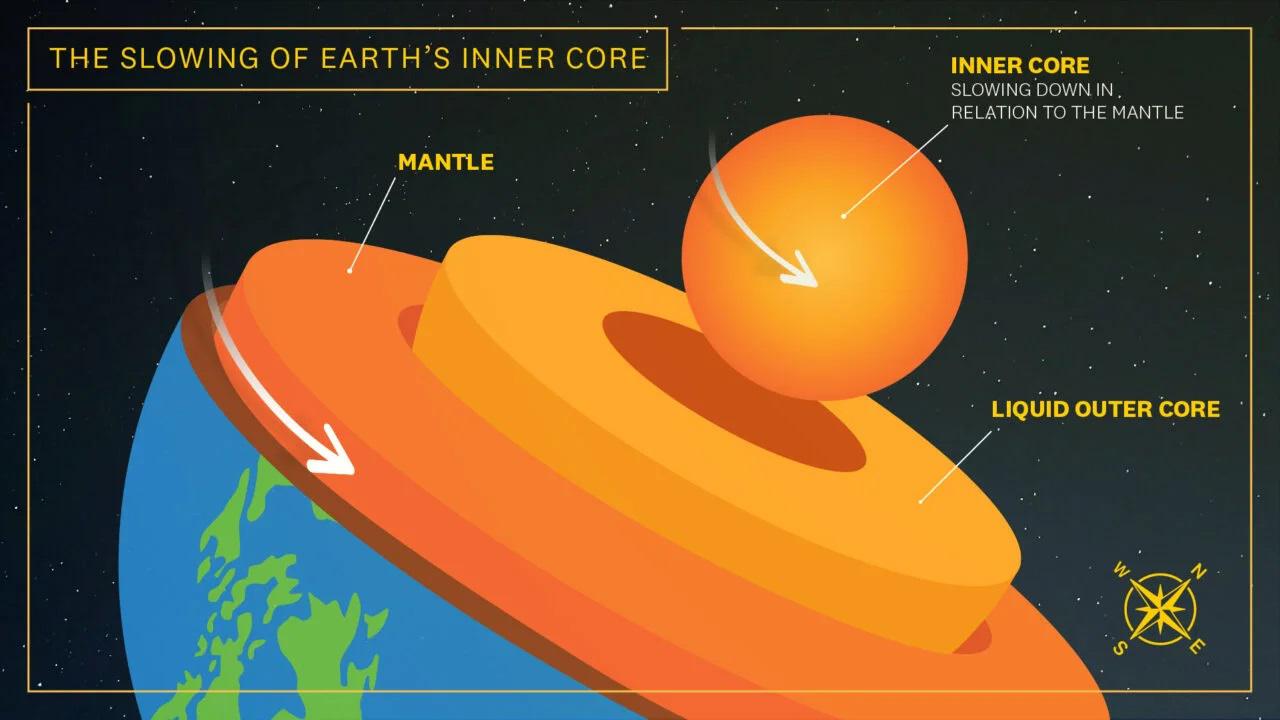A team of researchers from the University of Southern California has conducted a study that could represent a paradigm, an epochal turning point for understanding the internal dynamics of our planet: the Earth’s inner core has begun to slow down relative to its surface The results of the research were recently published in the scientific journal Nature.
The Earth’s inner core, about the size of the Moon is composed of a solid iron-nickel sphere surrounded by the liquid iron-nickel outer core. The biggest problem, for scientists and researchers around the world, is that the nucleus cannot be observed directly, it is in fact located almost 5000km below our feet. To give you an idea, the greatest depth reached by man, and his technological capacity, is about 12 km of the Kola Superdeep Borehole in Russia. Scientists, in fact, use seismic waves generated by earthquakes to create representations of the movement of the inner core and it has always been believed that it rotates at a speed greater than that of the Earth’s surface. The USC research overturns and distorts this data and indicates that since 2010 this trend has reversed: For the first time in 40 years, the inner core shows signs of slowing down.
According to the new findings and unlike previous studies, John Vidale, a professor at USC, and Wei Wang of the Chinese Academy of Sciences They took an original approach using seismic waves and repeated earthquakes to analyze the movements of the core. These earthquakes, which produce identical seismograms because they occur in the same area, provided crucial data that highlighted the reduction in the velocity of the inner core.
The researchers collected and analyzed seismic data recorded around the South Sandwich Islands from 121 repeating earthquakes that occurred between 1991 and 2023. They also used data from twin Soviet nuclear tests between 1971 and 1974, as well as repeating French and American nuclear tests from other studies of the inner core.
“When I first saw the seismograms that hinted at this change, I was perplexed,” said John Vidale, Professor of Earth Sciences at the USC Dornsife College of Letters, Arts and Sciences. “But when we found two dozen more observations that signaled the same pattern, the result was inescapable. The inner core had slowed down for the first time in many decades..”
Vidale suggests that the deceleration may be influenced by currents in the liquid outer core surrounding the inner core, which is also responsible for generating the Earth’s magnetic field, as well as by gravitational forces exerted by denser regions of the overlying mantle.
Although the direct consequences of this phenomenon on the Earth’s surface are still a matter of speculation, Vidale hypothesizes that they could include tiny variations in the length of the day, on the order of a thousandth of a second. These changes, while imperceptible on a daily basis, could have significant long-term implications.
